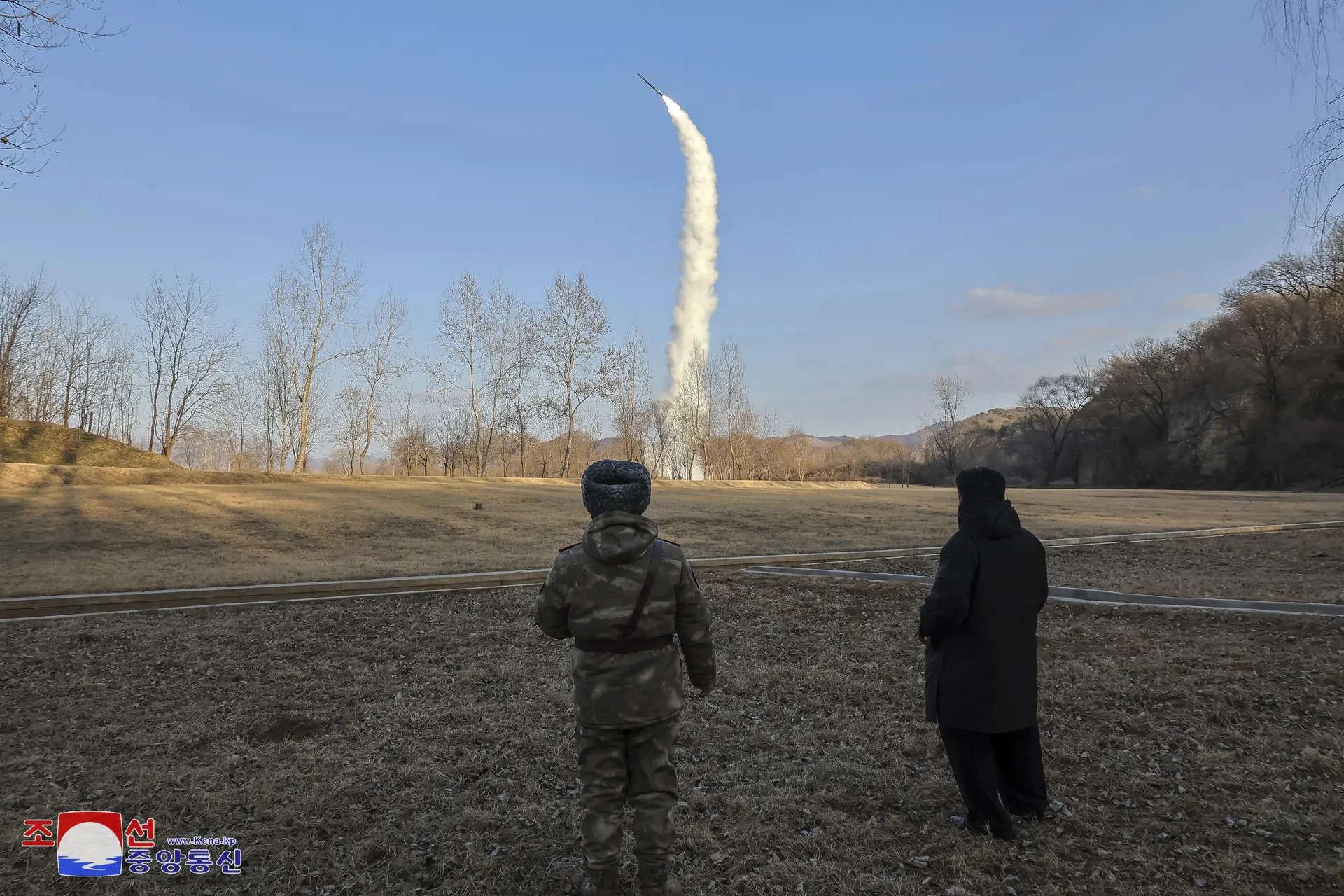North Korea's Recent Cruise Missile Test: A Show of Force or a Diplomatic Overture?
North Korea's recent cruise missile test has sent shockwaves across the globe, prompting questions about the nation's intentions. Was this a blatant display of military might, a calculated response to ongoing military exercises, or perhaps a subtle attempt to influence diplomatic negotiations? The situation is certainly complex and requires careful analysis. President Trump's stated intentions to reach out again to Kim Jong Un adds another layer of intrigue, fueling speculation about a potential return to diplomacy. The test, along with the strongly worded statement from the North Korean Foreign Ministry criticizing ongoing military exercises between the US and South Korea, suggests a possible recalibration of the complex relationship between these global power players. Could a show of strength lead to a pathway to renewed talks?
Understanding North Korea's Military Capabilities
North Korea's recent missile test highlights its growing arsenal of weapons. The strategic nature of the missile implies nuclear capability. With this latest test achieving a remarkable 1,500-kilometer range in an elliptical and figure-eight-shaped flight path, it signifies remarkable advancements in precision guidance systems. This also exhibits a complex technological capability indicating years of advanced weapon development programs. These enhancements pose a serious threat to regional stability, particularly South Korea and neighboring nations in the Pacific. Further advancement of such military technology presents the opportunity for further weapons proliferation to regions globally.
Assessing the Impact of the Military Test
The impact of these advancements in North Korea's missile technology has global implications. The strategic nature of the missiles, possibly with nuclear capabilities, creates a ripple effect in global geopolitics. This demonstrates the advanced development of weapon capabilities as the range has extended dramatically, emphasizing the need for heightened surveillance of military expansion and potential escalation to international disputes. The trajectory of the missile and accuracy further suggest the sophistication of the nation's engineering prowess. Any miscalculation could trigger international alarm, further endangering global relations.
Analyzing US-South Korean Military Exercises
The US and South Korea have routinely conducted joint military exercises that North Korea vehemently criticizes as rehearsals for invasion. These joint exercises often employ state-of-the-art technology, potentially posing a military threat, prompting criticism and heightened tensions. From North Korea's perspective, the exercises are a demonstration of aggression, triggering a corresponding escalation in military posturing and raising concerns of potential retaliation. Meanwhile, US and South Korea argue that such exercises are defensive in nature, intended to address potential threats and maintain regional security.
Navigating the Diplomatic Tightrope
This diplomatic chess game presents a precarious situation. Any wrong move risks the potential for major global conflict. Balancing aggressive military action with diplomatic measures is vital to avoid a large-scale military conflict. Diplomatic engagement remains critical in diffusing regional tensions. The need to carefully weigh the risk-reward ratio associated with further military escalation demands clear communication channels to avoid miscalculation, leading to the critical requirement for diplomatic talks. Understanding both North Korea's anxieties and its advancements in missile development is important in facilitating productive diplomacy.
The Role of Diplomacy in De-escalating Tensions
Despite the recent tensions and North Korea's demonstrable show of force, the possibility of diplomatic engagement still exists. President Trump's statement indicating his willingness to reach out to Kim Jong Un provides an opening, which has been a source of hope and worry alike. While the long-term prospects of such dialogue remain uncertain, a significant factor influencing the outcomes of the current scenario is Trump's previously demonstrated capacity to hold meetings directly with Kim Jong Un, leading to past periods of increased peace. The potential resumption of dialogue remains important, providing an alternative means to prevent major conflicts and de-escalate hostilities through communication.
Trump's Stance and its Implications
President Trump's stance is of significant geopolitical significance. His views of Kim Jong Un and willingness to engage may shape the situation's dynamics. Past history of summits and meetings may prove impactful. Yet this unique approach is not without risk; it carries an uncertainty that makes outcomes difficult to predict.
Take Away Points:
- North Korea's cruise missile test signals advanced military capabilities and potentially a shift in diplomatic strategy.
- The ongoing military exercises between the US and South Korea exacerbate the tense situation and must be carefully negotiated to avoid miscommunication and accidental conflict.
- While diplomacy presents considerable challenges, President Trump's intent to engage with Kim Jong Un offers a path toward de-escalation and resolution.
- Effective global engagement requires understanding and responsiveness to actions from both parties.




